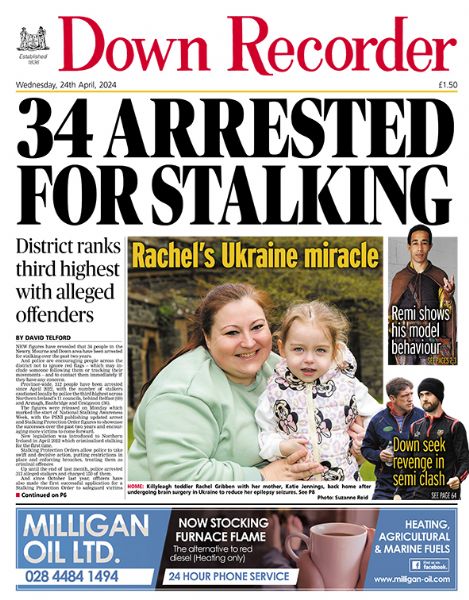Housing demand still high
Housing demand still high
27 August 2014
THE gap between supply and demand in Down’s squeezed social housing market is “significant”, according to a new report.
New figures show there were 1,617 applicants on the waiting list for social housing in Down District in March 2014 — just over half of whom were homeless, which the report categorises as housing stress.
There may also be evidence of Westminster’s ‘bedroom tax’ welfare reform impacting on those looking for affordable one-bed housing in the district. Most of those in urgent need for housing were single (50.3 per cent).
Continuing the rising trend, the 1,617 on Down’s waiting list is up slightly from 1,601 last year and compares to the 2010 waiting list of 1213.
Despite the demand, the proportion of social housing in the district (9.8 per cent) is less than the Northern Ireland wide figure of 14.9 per cent.
The new Housing Executive District Housing Plan released this week makes clear there is a problem.
“The gap between demand and supply with Down’s social housing sector is significant, despite delivery of 150 units of social housing during 2013/14,” the report reads.
“The impact of welfare reform proposals on waiting lists is being carefully monitored. We continue to review the requirement and availability of one bed properties and identify opportunities to increase supply through new build.”
The Housing Executive report did note social housing allocations had increased 43.9 per cent since March 2013, “inflated by the delivery of new build social housing”, mostly in Newcastle. On a positive note it also recorded that the number of people in housing stress had decreased from last year.
“The Down Housing Need Assessment 2013-2018 identified a need for 640 additional social housing units in the district,” the report continued.
“Housing stress has decreased by 6.1 per cent over the past year in Down District. The most significant decrease has been in small families, a direct result of the delivery of social housing in Newcastle.
“The number of households presenting as homeless decreased by 0.9 per cent in the past year in Down District.”
Space for development does not appear to be the problem, according to the latest figures.
DOE’s Northern Ireland Housing Land Availability Report for 2013 estimates a potential for 6,617 new dwellings in Down District.
The 2011 Census also reports 2,167 empty dwellings in Down District, though does not distinguish vacant dwellings from second and holiday homes.
To fuel demand further, Down’s population is projected to increase a further 7.6 per cent to 75,806 by 2022.
Looking ahead, the social housing problem looks set to increase further with the formation of the new Newry, Mourne and Down super council.
In Newry and Mourne, which Down is to officially partner with next year, there were 2040 applicants registered on the waiting list for social housing with 59 per cent in housing stress.
“The gap between supply and demand within Newry and Mourne’s social housing sector is widening.” the Newry report reads.
Here the proportion of social housing in Newry and Mourne (10.2 per cent) is also less than the Northern Ireland figure of 14.9 per cent.
The population in Newry and Mourne is expected to increase by a further 16.2 per cent to 117,203 by 2022.

